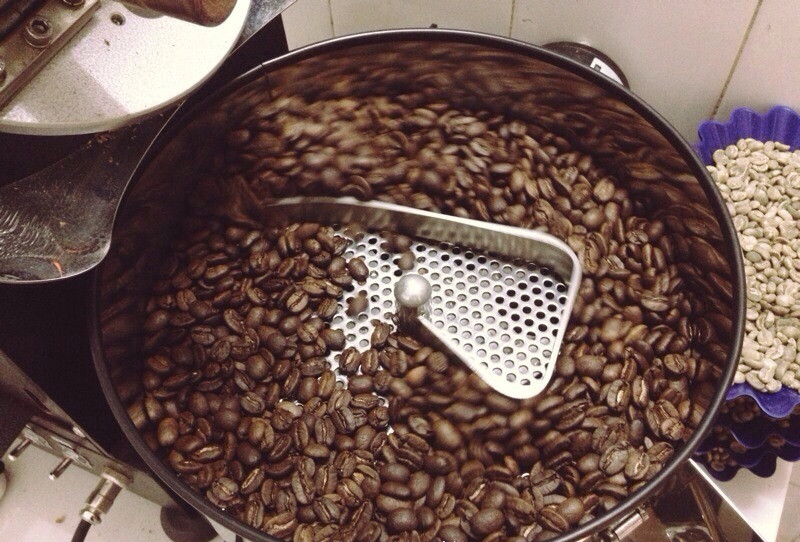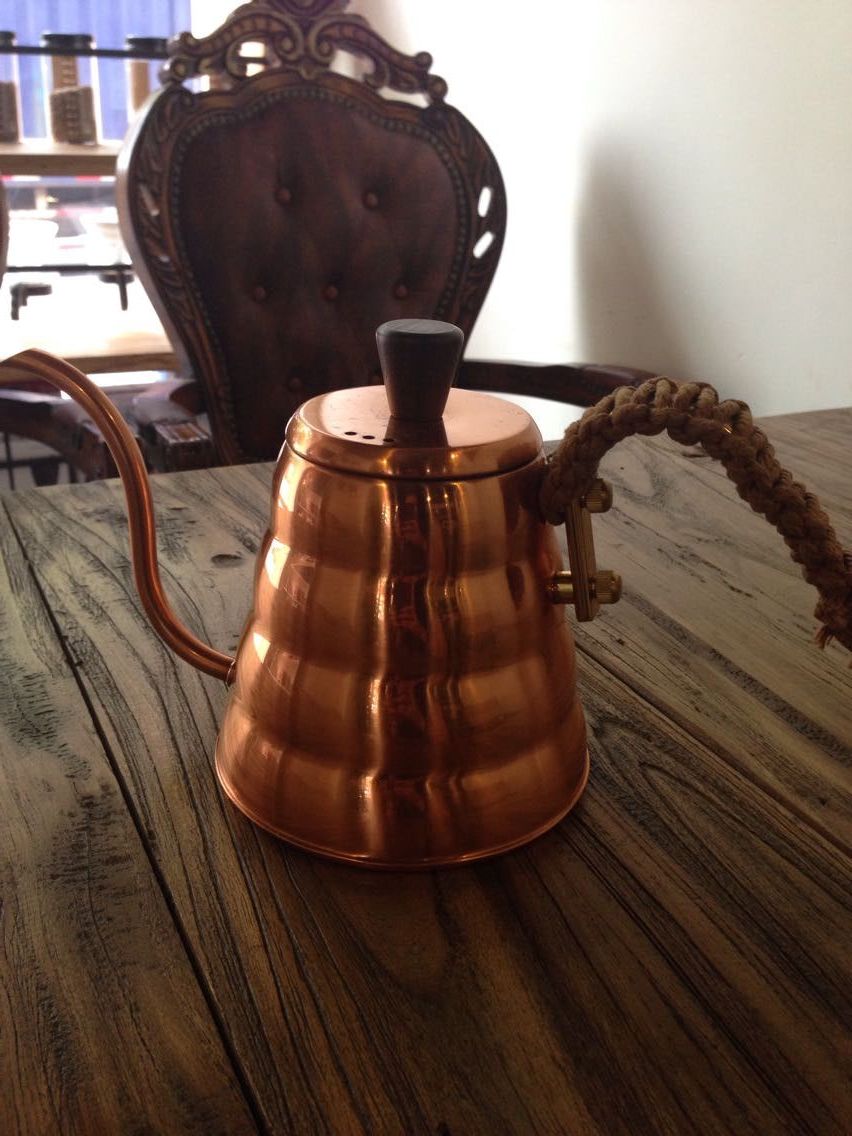Boutique Coffee, introduction to roasting of Coffee beans

Different roasting methods, different roasting degrees, the taste of coffee is not the same, different coffee, roasting methods are not the same. Therefore, the way of roasting is very important and exquisite for coffee. And how to bake coffee beans? Coffee lovers all know that "roasting of coffee" is closely related to the quality of raw beans, roasting technology, and the sensitivity of roasters. Roasting out good coffee beans can give off the taste of coffee completely. The flavor of coffee not only depends on the variety of coffee, roasting is also a decisive factor.
Let's talk about the roasting methods and steps of coffee beans.
1. The choice of raw coffee beans is very important
The choice of raw beans directly determines the final taste of coffee. Without good quality raw beans, it is impossible to drink good coffee. Blending different coffee beans in different proportions may form a better taste than raw beans, but if you want to drink a more pure taste, you should still pay attention to the choice of raw beans.
2. Coffee roasting
Coffee beans are roasted in a roaster (a large rotary barrel). After 5-7 minutes of high heat, fully dry the residual water in the coffee, at this time the color of the coffee will also change, slowly turn yellow, and you can smell the strong aroma of the coffee.
In a few minutes, you can hear the popping sound of the coffee, at this time, the size of the coffee beans will double, and with the "crackling" sound (similar to the sound of popcorn), the color of the coffee will turn dark brown, but it should be noted that the coffee is not roasted well at this time, there is still a very strong sour taste, and the coffee needs to be roasted.
3. The release of coffee taste
About 15 minutes after baking in the roaster, the taste of the coffee will be fully released (but it also depends on different types of coffee), which also means that the coffee roasting process is over.
Baking process
Most people think that baking is nothing, just frying the raw beans with fire. In fact, in the process of coffee processing, roasting is the most difficult step, it is a kind of science, but also an art, so in Europe and the United States, experienced roasters enjoy a highly respected status. Baking can be divided into the following three stages
1. Drying
In the early stage of baking, the raw beans begin to absorb heat, and the water inside gradually evaporates. At this time, the color gradually changed from green to yellow or light brown, and the silver film began to fall off, you can smell a faint smell of grass. The main function of this stage is to remove moisture, which accounts for about half of the baking time, because water is a good heat transfer conductor and helps to bake the internal material of coffee beans. Therefore, although the aim is to remove water, the baker will make good use of the temperature of the water and properly control it so that it will not evaporate too quickly; in general, it is best to control the water to reach the boiling point and turn into steam in 10 minutes. At this time, the internal material is fully cooked, and the water begins to evaporate, rushing out of the outside of the coffee beans.
2. High temperature decomposition
Baked to about 160 degrees Celsius, the water inside the beans will evaporate into gas and begin to rush out of the outside of the coffee beans. At this time, the interior of the raw bean changed from endothermic to exothermic, resulting in the first burst sound. After the bursting sound, it turns to endothermic again, and the pressure inside the coffee bean is extremely high, up to 25 atmospheric pressure. Heat and pressure begin to deconstruct the original tissue to form new compounds that create the taste and taste of coffee; at about 190 degrees Celsius, the transition between endothermic and exothermic occurs again. Of course, high temperature cracking continues to occur, coffee beans from brown to dark brown, gradually entering the stage of re-baking.
3. Cooling
Coffee must be cooled immediately after roasting, quickly stop the pyrolysis at high temperature and lock the flavor. Otherwise, if the high temperature in the beans continues to work, the aromatic substances will be burned. There are two cooling methods: one is air-cooled and the other is water-cooled. The air-cooled type requires a lot of cold air to cool the coffee beans quickly within 3-5 minutes. In the field of professional baking, large roasters are equipped with a tray with a rotatable driving arm; when the baking is completed, the beans are automatically fed into the tray, and the fan at the bottom of the tray is immediately activated to blow cold air. And the pushing arm stirs the coffee beans to cool them. Although the speed of the water-cooled type is slow, it is clean and does not pollute, and it can better retain the aroma of the coffee, so it is used by the selected coffee industry. The water-cooled method is to spray a layer of water mist on the surface of the coffee beans, allowing the temperature to drop rapidly. As the amount of spraying water is very important, it requires precise calculation and control, and will increase the weight of baked beans, which is generally used in large-scale commercial baking.
The problems commonly encountered in coffee roasting are as follows:
First, when the preheating temperature of the oven is not enough, the coffee beans are immediately put into the oven, which prolongs the baking time. Therefore, the baking loss is large, and the color of coffee beans is light, which is due to the lack of heat and the lack of full coking of the skin, resulting in a lack of color and rough internal tissue.
Second, the temperature of the oven is too high, the hard skin is formed prematurely on the surface of the coffee, which suppresses the expansion of the internal tissue, and because of its fast surface coloring, the operator mistakenly thinks that the product has been baked and ends the baking ahead of time. The inside of this kind of bean is sticky and dense, it doesn't expand as it should, and it doesn't have a normal flavor.
Third, the gap is too long after preheating. Too much heat accumulates in the internal furnace which has been dry and hot for too long. As soon as the coffee beans enter the oven, all the heat sources concentrate on the surface of the beans at the initial stage of the baking process, forming too strong heat, and then the heat disappears and cools rapidly. The unstable temperature in the furnace makes the coffee beans difficult to ripen inside.
Fourth, the baking time is too much or not enough. The baking temperature and time should be adjusted according to the number of beans. A small number of baking silos have more space, and the metal conducts more heat radiation, so the temperature is lower, while when the quantity is larger, the temperature can be higher. The baking time also needs to be adjusted flexibly. The heating of beans in the oven is nothing more than the absorption of heat from the appearance and surrounding to the center of the beans, so the baking can be observed from the changes in the appearance of the beans.
In addition, the type and performance of the roaster will also cause the difference of baking time and temperature. The convection design of energy has been continuously improved from the direct-fired gas up-and-down fire mode to the electric heating mode which is now widely used. At the same time, the installation of fans can improve the stability of thermal convection, make the color of baked beans more uniform, and save electricity and baking time.
Advanced tools and equipment make the baking process easier to operate, and it is equally important for operators to accumulate baking experience.
In short, coffee roasting will face a variety of problems, only familiar with the principle of coffee roasting, continue to accumulate experience, coupled with improvisation, baristas can master superb skills.
Important Notice :
前街咖啡 FrontStreet Coffee has moved to new addredd:
FrontStreet Coffee Address: 315,Donghua East Road,GuangZhou
Tel:020 38364473
- Prev

Recommend 6 common coffee pots in cafes
Hand filter cup features: simple, convenient and quick operation. It is also suitable for friends in the office and those who are at home (those who have high requirements for the taste of coffee). Accessories: hand flushing pot filter paper filter cup cone pot taste: can perfectly reflect the flavor characteristics of coffee siphon coffee pot introduction: siphon pot (Syphon) commonly known as "glass ball" or "siphon", is simple and easy to use
- Next

There is always one of the 48 coffee making methods that you like.
1. Latte 2. Maggiadoto 3. Iced mocha 4. Yuanyang iced coffee 5. Fragrant foam iced coffee 6. Scottish Alice Coffee 7. Floating iced coffee 8. Java mocha 9. Coconut coffee 10. Viennese coffee 11. Warm coffee 12. Strong iced coffee 13. Lemon coffee 14. Missimei Coffee 15. Mackland Coffee 16. Roman Coffee 17. Mexican iced coffee 18. Rose romantic coffee
Related
- What is the meaning of lactic acid fermentation with coffee bean treatment?
- How to judge the state of foam by sound?
- How does the latte pull out the unicorn pattern? Come to get for a little trick to improve the flower pull!
- Will flower pulling affect the taste of the latte?
- Do you know the history of coffee?
- The difference between honey treatment and sun washing what is raisin honey treatment?
- What kind of milk can a novice use to make coffee foam to keep the foam longer? The correct method and skills of milking tutorial sharing
- Why do washed coffee beans taste sour? Flavor characteristics of washed Coffee
- Introduction to the skill of how to practice the size and height of water injection around the circle of hand-brewed coffee
- How do beginners practice coffee flower drawing from scratch?

